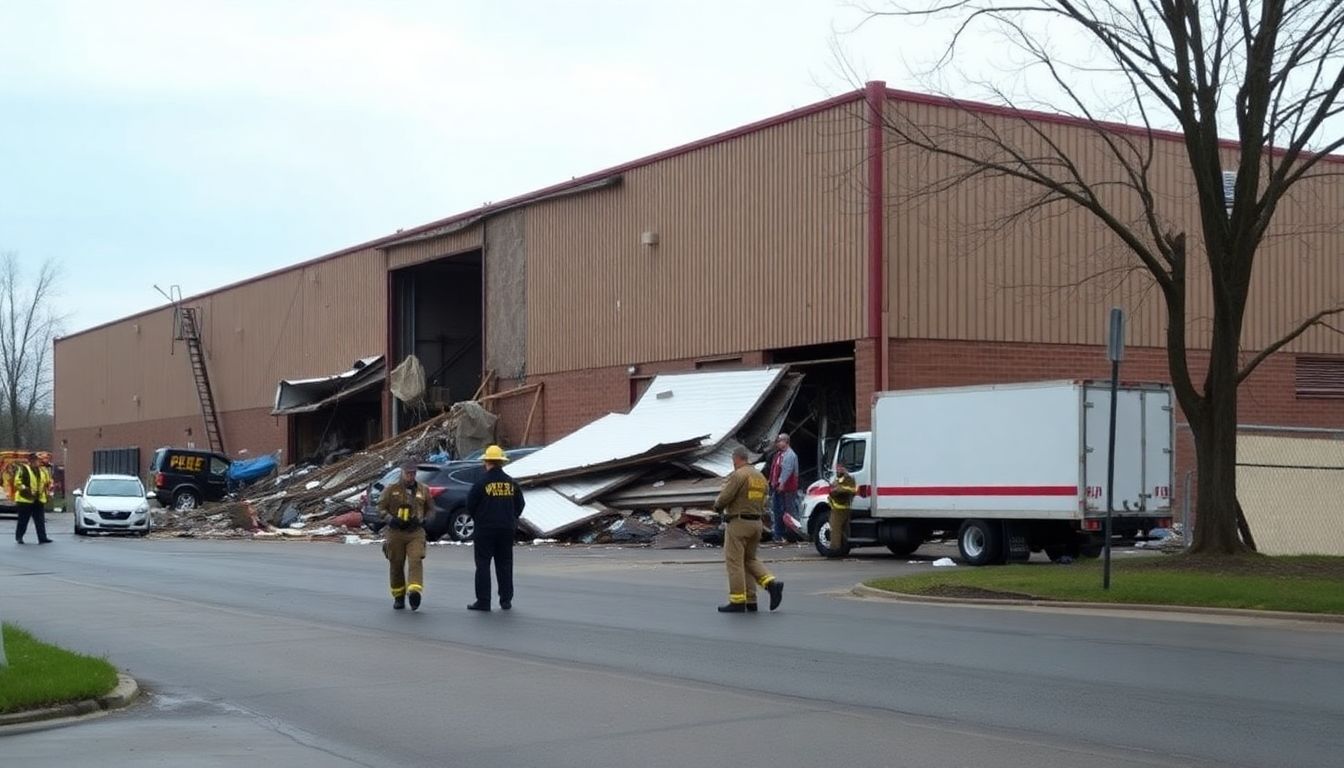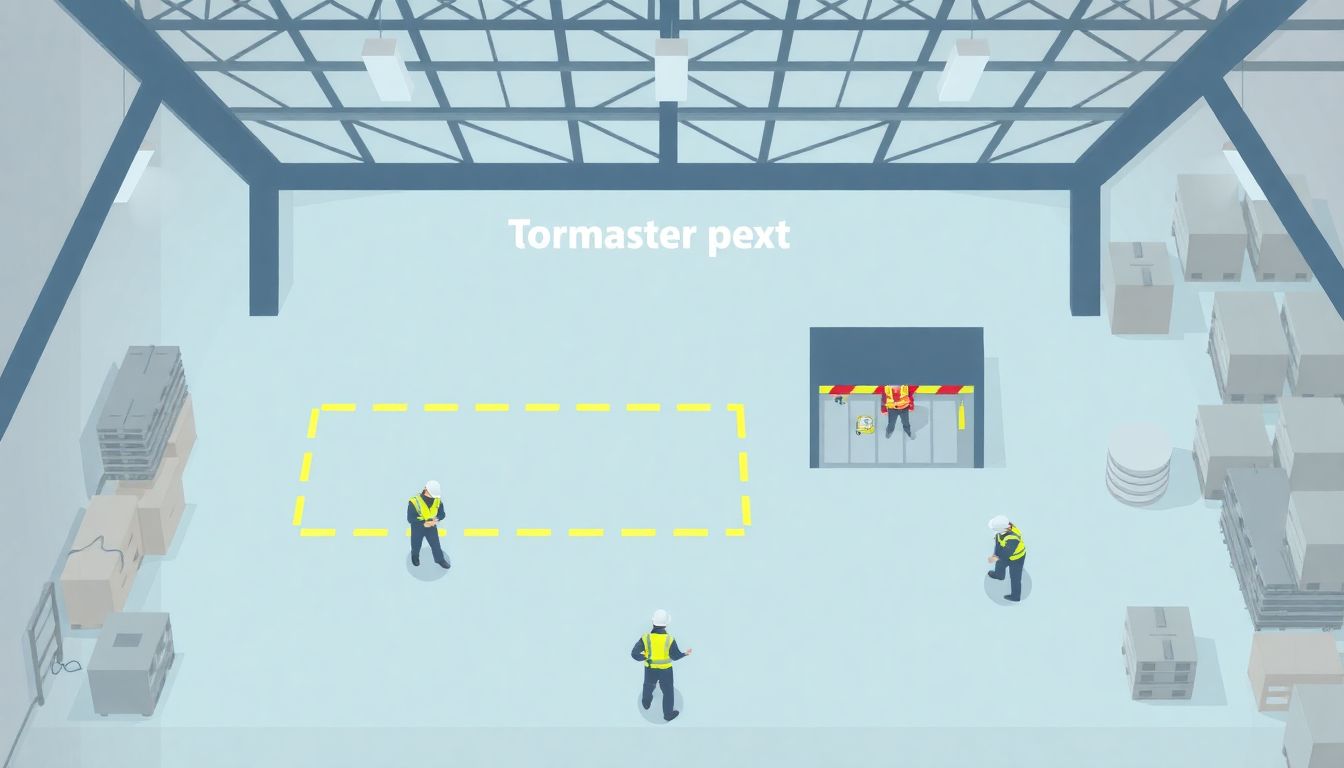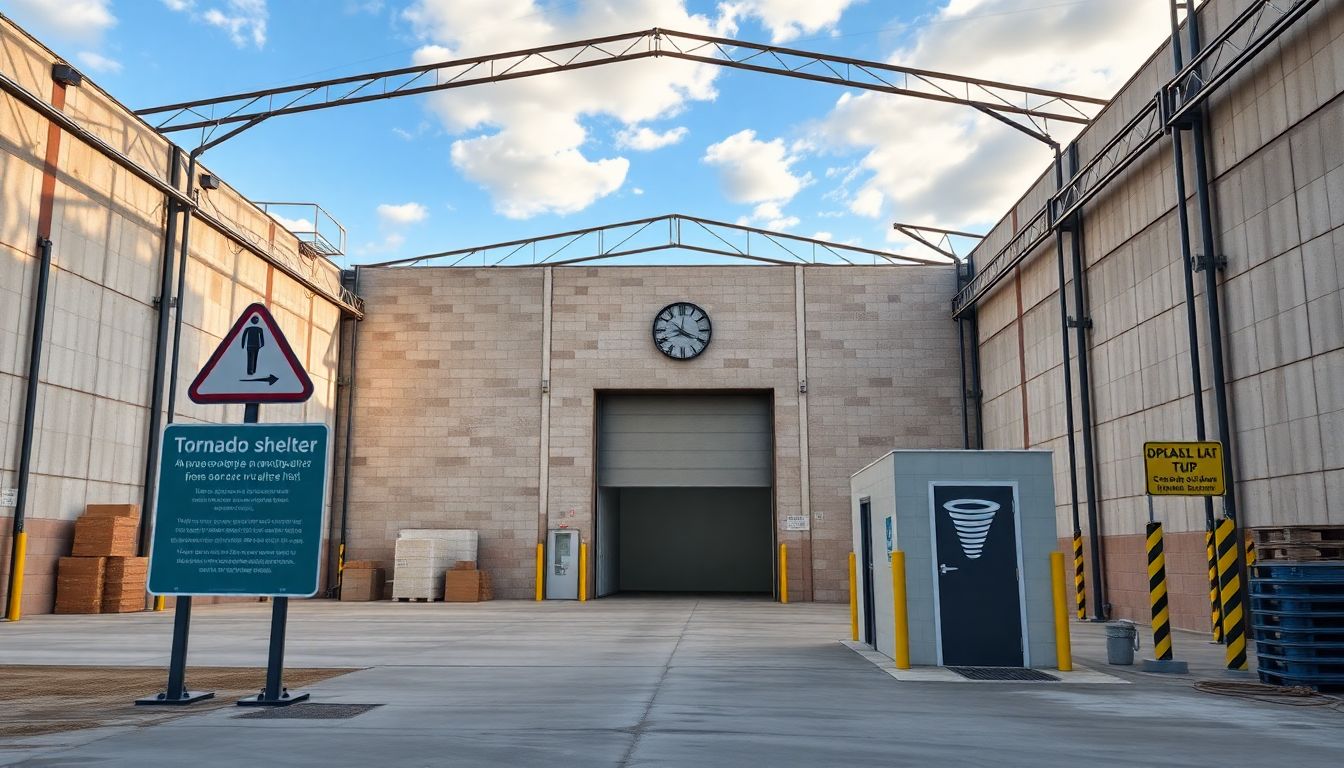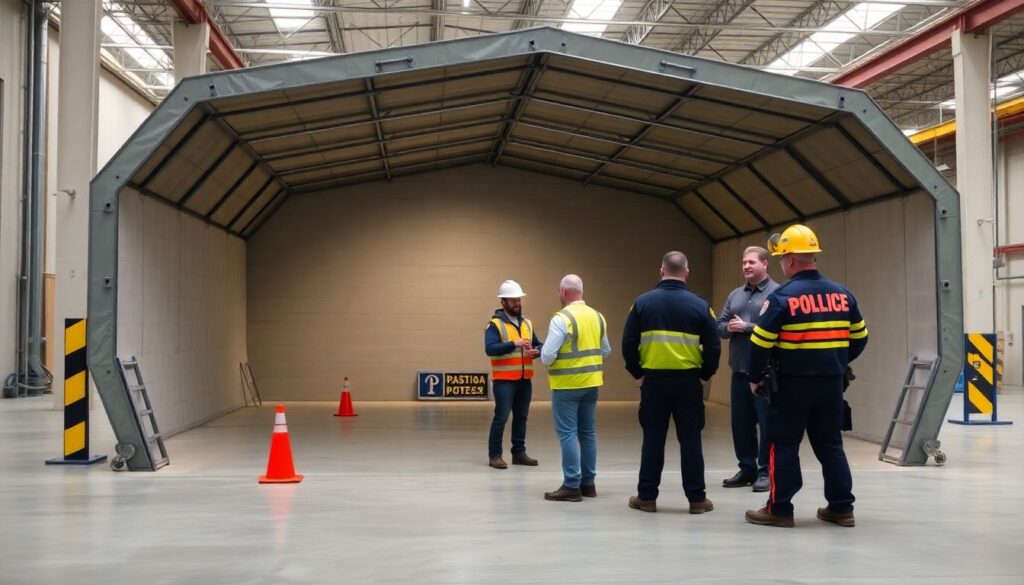Welcome to this detailed exploration of the recent recommendations made by the Warehouse Safety Standards Task Force in Illinois. This article delves into the aftermath of the deadly 2021 tornado in Edwardsville, the subsequent formation of the task force, and the critical recommendations they’ve put forth to enhance warehouse safety. Join us as we uncover the importance of tornado shelters in warehouses and the broader implications for worker safety.
In the wake of the Edwardsville tornado, Illinois lawmakers push for enhanced safety measures in warehouses.
In the heart of an expansive, bustling warehouse, where towering shelves cast long shadows, a gleaming new structure stands out like a beacon of safety. This is no ordinary addition, but a state-of-the-art tornado shelter, freshly constructed with reinforced walls and a fortified roof, ready to protect the warehouse workers from nature’s wrath.
Surrounding the shelter, rows of workers in high-visibility vests are undergoing a comprehensive safety training session. They listen intently as their instructor explains the shelter’s features and the emergency protocols. Their faces reflect a mix of attention and appreciation, knowing that their safety is a top priority.
Meanwhile, a group of first responders huddle together at a table strewn with maps and documents. They discuss emergency plans, their expressions serious and focused. Their presence not only underscores the warehouse management’s commitment to safety but also provides the workers with an added sense of security, knowing that help is always close at hand.

The Edwardsville Tragedy
On the night of December 10, 2021, a catastrophic EF-3 tornado tore through Edwardsville, Illinois, leaving a trail of destruction in its wake. The tornado, packing winds up to 150 mph, directly hit the Amazon warehouse, causing catastrophic structural damage. The six-story building, spanning the size of nearly 14 football fields, had its roof ripped off, and 40-foot-tall concrete walls were reduced to rubble. The sheer force of the tornado caused the massive structure to collapse, trapping many workers inside.
The human toll was devastating. Six workers lost their lives, and another was injured. In the immediate aftermath, rescue teams worked tirelessly to search for survivors, using specialized equipment to move the massive slabs of concrete. The search and rescue efforts lasted for days, with first responders battling harsh winter temperatures. The victims were remembered as dedicated and hardworking individuals, leaving behind grieving families and a community in mourning.
The tornado’s impact raised urgent questions about warehouse safety and Amazon’s policies. Key points of concern included:
- Why were workers not evacuated sooner?
- Were the warehouse’s safety protocols adequate?
- How did the building’s design contribute to the collapse?
These questions highlighted the need for a thorough investigation into the event’s timeline and the company’s emergency procedures.
In the wake of the tragedy, Amazon faced intense scrutiny from lawmakers and the public. Calls for improved safety measures and better worker protections echoed through various platforms. The incident served as a grim reminder of the vulnerability of workers in large warehouses and the need for robust safety protocols. The Edwardsville tornado not only left a trail of destruction but also sparked a critical conversation about workplace safety in the face of natural disasters.

Formation of the Warehouse Safety Standards Task Force
In the wake of the devastating Edwardsville tornado that claimed lives and left a trail of destruction, Illinois lawmakers swiftly responded by establishing the Warehouse Safety Standards Task Force. This decisive action was taken to address the pressing need for improved safety measures in warehouses and other large storage facilities across the state. The task force, composed of industry experts, safety professionals, and legislators, was charged with the critical mission of reviewing current safety standards, identifying gaps, and proposing new regulations to enhance the safety and resilience of these structures in the face of natural disasters and other emergencies.
The Warehouse Safety Standards Task Force embarked on its mission with a sense of urgency and purpose. Its members conducted extensive research, consulted with stakeholders, and analyzed best practices from other regions. The task force held public hearings to gather input from warehouse owners, workers, and community members, ensuring that all voices were heard and considered. This comprehensive approach was aimed at developing practical and effective solutions to bolster warehouse safety and prevent future tragedies.
After months of diligent work, the task force presented its final report to the Illinois General Assembly. The report highlighted several key findings that underscored the need for immediate action. Among these were:
- The lack of uniform safety standards across the warehouse industry.
- Inadequate emergency preparedness and response plans.
- Insufficient training for warehouse workers in safety procedures.
- The need for stronger enforcement mechanisms to ensure compliance with safety regulations.
These findings served as a stark reminder of the work that needs to be done to ensure the safety of warehouse workers and the communities surrounding these facilities.
The final report also included a series of recommendations designed to address the identified issues. These recommendations ranged from the development of statewide warehouse safety standards to the implementation of mandatory emergency drills and enhanced worker training programs. The task force also emphasized the importance of regular inspections and tougher penalties for non-compliance. With these proposals, Illinois lawmakers are poised to take significant steps towards creating a safer and more resilient warehouse industry, setting a benchmark for other states to follow.

Recommendations for Enhanced Safety
In the wake of recent devastating tornado events, the task force assembled to examine and enhance public safety has released a series of recommendations aimed at bolstering protection and resilience, particularly in vulnerable settings.
One of the most notable proposals is a significant amendment to building codes, mandating the inclusion of tornado shelters in warehouses. This recommendation is not merely a suggestion, but a crucial step towards safeguarding lives and property. Warehouses, often sprawling structures with large, open spaces, can be particularly susceptible to tornado damage. By ensuring that these buildings include reinforced shelters, we can provide essential protection for workers and significantly reduce the risk of injuries and fatalities during severe weather events. The proposed amendment emphasizes the need for these shelters to meet specific design and construction criteria, guaranteeing their effectiveness in withstanding even the most powerful tornadoes.
Beyond structural enhancements, the task force has underscored the importance of site-specific emergency plans. These plans are not one-size-fits-all; rather, they should be tailored to the unique layout, occupancy, and risks associated with each individual site. A well-crafted emergency plan considers various factors, such as:
- The building’s design and construction materials
- The average population and their familiarity with safety procedures
- The site’s proximity to emergency services and medical facilities
- The historical weather patterns and potential hazards specific to the location
By accounting for these details, emergency plans can provide clear, actionable guidelines that enable swift and orderly responses in the event of a tornado or other disasters.
The role of first responders in implementing these emergency plans is paramount. The task force has highlighted several key areas where first responders can make a difference:
-
Preparedness:
First responders should be involved in the development and regular updating of emergency plans, providing their expertise to ensure these plans are practical and effective.
-
Training:
Regular drills and simulations should be conducted to keep first responders’ skills sharp and to familiarize them with the specific challenges and layouts of the sites they may be called to protect.
-
Communication:
Clear and reliable communication channels must be established between first responders, site management, and local emergency services to facilitate coordinated responses during disasters.
-
Response and Recovery:
In the aftermath of a tornado, first responders play a critical role in search and rescue efforts, medical aid, and the restoration of essential services.
By embracing these recommendations and fostering a culture of preparedness, we can significantly enhance our collective resilience in the face of tornadoes and other natural disasters.

The Path Forward
In the heart of the Midwest, Illinois is not just a hub for commerce but also a state that faces unique environmental challenges. As we look towards the future of warehouse safety in Illinois, there is a pressing need to address the increasing frequency of severe weather events, particularly tornadoes. Over the past decade, Illinois has seen a rise in the number of tornadoes, with an average of 54 tornadoes per year, according to the National Oceanic and Atmospheric Administration (NOAA).
In response to these concerns, the Illinois Workplace Safety Task Force was convened to assess and reinforce warehouse safety measures. The task force’s recommendations, expected to be implemented in the coming years, prioritize several key areas to bolster safety standards. These include:
- Mandatory severe weather drills to ensure employees are prepared for emergencies.
- Enhanced building codes to reinforce structural integrity against high winds.
- Improved communication systems to disseminate real-time weather alerts and warnings.
- Investment in advanced safety training programs for warehouse staff.
The implementation of these recommendations will not only safeguard warehouse workers but also ensure the continuity of operations during severe weather events. As Illinois continues to grapple with the increasing frequency of tornadoes, the need for ongoing vigilance and proactive safety measures cannot be overstated.
Looking ahead, the future of warehouse safety in Illinois hinges on a collaborative effort between policymakers, business owners, and employees. By embracing innovative solutions and maintaining a steadfast commitment to safety, Illinois can lead the way in creating a resilient and secure environment for its warehouse industry. As the task force’s recommendations come to fruition, the state will be better equipped to face the challenges posed by severe weather, ensuring that Illinois remains a thriving hub for commerce and innovation.
FAQ
What are the key takeaways from the final report of the Warehouse Safety Standards Task Force?
What are the benefits of having a tornado shelter in a warehouse?
What role do first responders play in warehouse safety during tornadoes?
How can warehouse operators better prepare for severe weather?
- Review and update severe weather procedures.
- Provide regular training and drills for employees.
- Ensure audible warning devices are accessible.
- Develop site-specific emergency plans.









